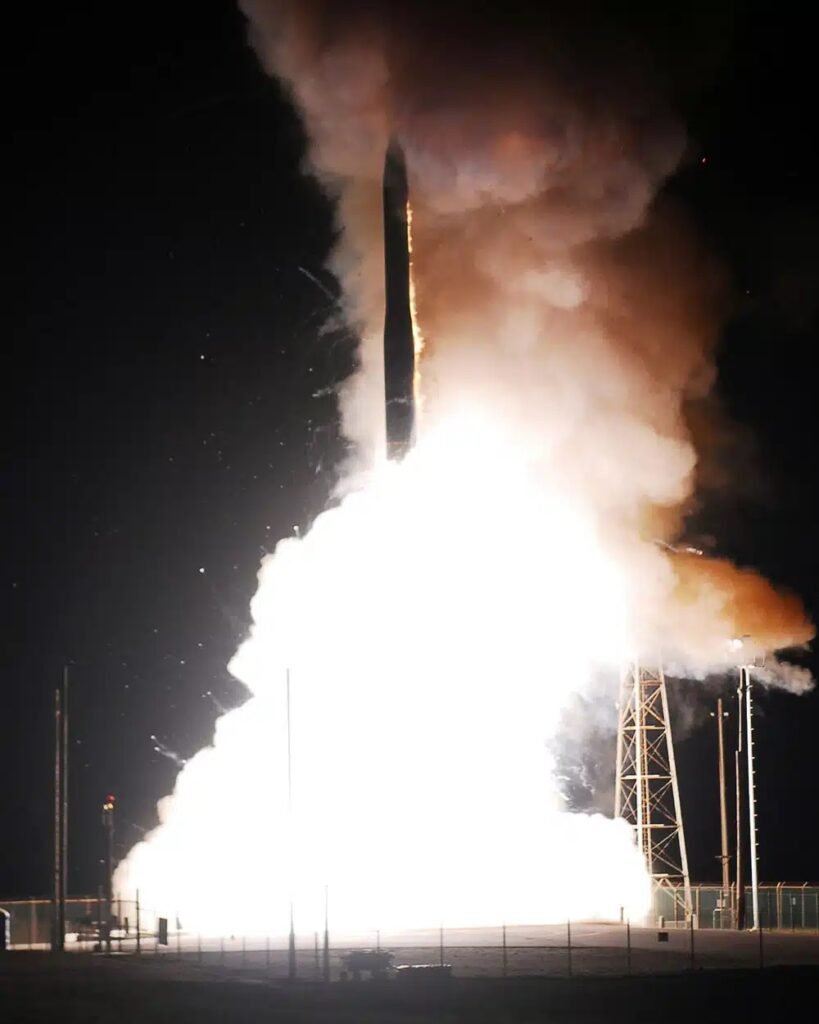WASHINGTON — The Air Force is grappling with a significant budgetary challenge as the cost of its upcoming nuclear missile program, the Northrop Grumman-produced LGM-35A Sentinel intercontinental ballistic missile, has exceeded initial projections. The program’s financial strain has triggered a Nunn-McCurdy breach, prompting the Air Force to report the situation to Congress, potentially jeopardizing the fate of the program.
A spokesperson for the Air Force confirmed to Defense News that the Sentinel program, intended to replace the Cold War era LGM-30G Minuteman III ICBM as part of the U.S. nuclear triad, has surpassed its original cost estimate. The Office of the Secretary of Defense will conduct a comprehensive review of the Sentinel program, and a decision will be made regarding potential restructuring or cancellation.
The Air Force emphasized the importance of maintaining a robust nuclear deterrent, stating, “Maintaining a strong nuclear deterrent is critical to safeguarding our nation and protecting our allies from a nuclear attack.”
Initially awarded a $13.3 billion contract in 2020, the Sentinel program was expected to cost approximately $96 billion. However, the per-unit total cost for the missile has surged from $118 million in 2020 to around $162 million, marking a 37% increase and triggering the cost overrun process.

A critical Nunn-McCurdy breach occurs when a major defense acquisition program’s cost exceeds 25% of current cost targets or at least 50% over the original cost. The Defense Department is obligated to inform Congress about such a significant cost overrun and must certify the program’s essential role in national security to justify its continuation.
Undersecretary of Defense for Acquisition and Sustainment, William LaPlante, acknowledged the complexity of the Sentinel program, stating, “Sentinel is one of the department’s largest, most complex programs.” The Pentagon has taken steps to address the financial challenges, but a certification process will be required to assess the program’s viability.
The Pentagon must certify to Congress that there are no more cost-effective alternatives to the Sentinel program, that the new cost estimates are reasonable, that the program takes precedence over others facing potential funding cuts, and that its management structure can effectively control further cost growth. Failure to secure this certification could lead to the termination of the program.
The Air Force and the Department of Defense face a critical juncture as they navigate the financial implications of the Sentinel program, mindful of the overarching goal to ensure a formidable nuclear deterrent for national security.
Defense Secretary Lloyd Austin, in December 2022, underscored the significance of the Sentinel program, labeling it as one of the Pentagon’s top priorities and prioritizing it in the supply chain, according to statements from LaPlante. In 2023, Austin approved modifications to the acquisition strategy aimed at maintaining the program’s schedule.
LaPlante assured that the Department of Defense is ready to fulfill its statutory obligations in response to the Nunn-McCurdy declaration, conducting a thorough review to identify factors contributing to the cost escalation. He emphasized the commitment to keeping Congress informed and maintaining open communication throughout the process.
Prime contractor Northrop Grumman, responsible for the engineering and manufacturing development phase, expressed confidence in the program’s progress, citing “significant progress” and milestones achieved to mature the design and mitigate risks. The company is dedicated to supporting the Air Force in updating acquisition cost forecasts for future phases, encompassing construction, production, and deployment.
Despite these efforts, the Air Force acknowledged a likely two-year delay in reaching initial operational capability (IOC) for the Sentinel program. Initially set for 2029, the Government Accountability Office’s warning of a potential delay until spring 2030 now seems conservative, with the program falling further behind schedule.
The IOC delay is subject to review as part of the Nunn-McCurdy process. The Air Force attributed the bulk of the cost growth to the program’s command and launch segment, emphasizing the complexity of building over 400 new launch facilities, laying extensive fiber optic networks, and acquiring real estate easements from numerous landowners.
Additionally, the Sentinel program faces the daunting task of constructing more than 7,500 miles of utility corridors across missile wings in five states while maintaining 400 ICBMs on alert. The Air Force clarified that the missile itself has not experienced similarly severe cost escalation.
In November 2023, Air Force Secretary Frank Kendall expressed concerns about the program, acknowledging its struggles and anticipating potential cost increases. He characterized the Sentinel program as one of the most substantial endeavors undertaken by the Air Force, emphasizing challenges in the construction of launch complexes, real estate development, and civil engineering work.













